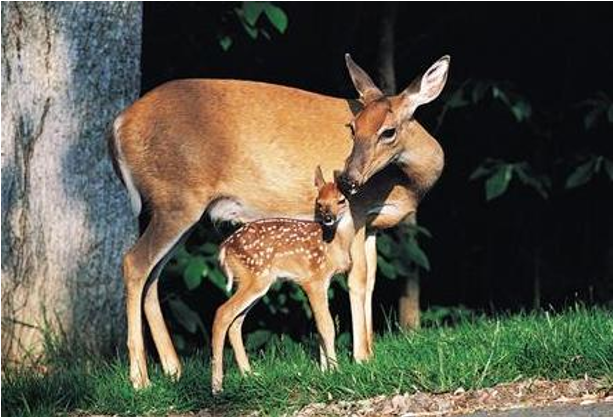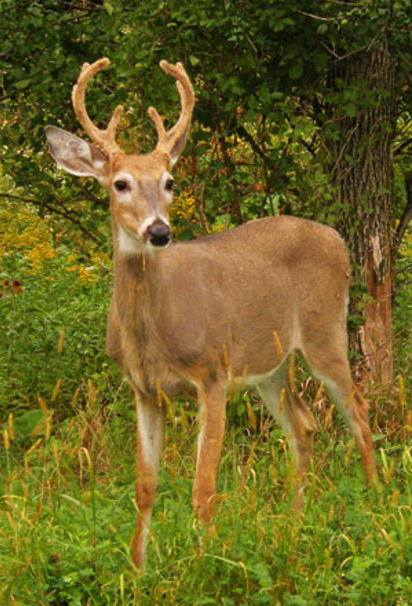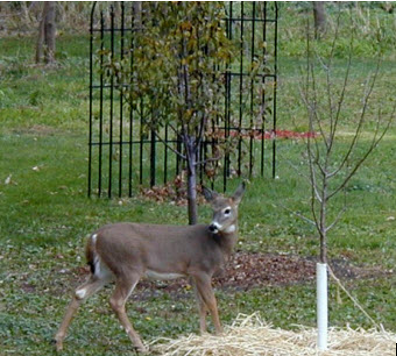We all love the sight of deer feeding out in a field, but the ability for deer to adapt to many types of environments has made them a pest to many of us. The Minnesota DNR has a lot more information deer history and management within the State.

Whether or not you’re trying to encourage deer to visit your yard or are actively chasing them away, everyone can enjoy a brief family visit!
Deer Habitat
White-tailed deer live in prairies, forests, swamps, wood lots and agricultural fields. They are common in both suburban and rural areas. Sometimes they are a traffic hazard. During harsh winters, deer may also become a nuisance to farmers by eating hay or corn that is stored for livestock.
- Deer cannot eat mature trees and must have access to the forest floor where they can find new immature growth.
- Often, if you see families of deer more than once in your yard, it is the same family.
- Deer do not travel more than 2 square miles in a lifetime.
- Fall is their most active time.
Changing Seasons
Deer need different foods throughout the year.
- In spring they are hungry for protein. They consume many grasses, peas, and alfalfa.
- In summer deer craves leaves from trees, legumes, corn, and strawberries.
- In fall they lean toward grains, berries, fallen leaves, acorns, and more evergreens.
- Winter is the most difficult season for the deer to find food and they will eat dead twigs, evergreens, and fallen leaves.
To help them out, and help attract them to your yard in all seasons, put out some Critter Crunch, Whole Corn or Cracked Corn. They will appreciate it!

Buck photo by MN DNR
Attracting Deer
- Create a dense thicket of trees and shrubs of native plants such as viburnum, dogwood, and elderberry, which can create a protective area.
- Birdbaths are also used by deer for water.
- Put out some feed (i.e. the Critter Crunch, Whole Corn, or Cracked Corn as mentioned above).
- Place food on a flat screen for easy feeding.
- Salt licks are good because deer seek out salt deposits through the year.
Discouraging Deer
- Plant varieties that deer do not prefer include allium, foxglove, barberry, and ash. Click on the link for a more detailed list of deer resistant plants.
- Line the deer entryway to your garden with resistant plants.
- Hide the hosta! And all their favorite plants with a “non-tasty” hedge screen.
- Keep all wild grassy areas trimmed and cleaned to deter deer from bedding down.
- Place deer feeders close to the entrance of your garden and they will have no need to go any further.

Not today, deer.
Protection and Chemical Deterrents
Further protect those plants with organic deterrents.
- Wrap young trees with plastic tubes or burlap.
- Start deterrents in spring when deer are active.
- Place deterrents in many areas of your garden to accommodate different wind directions. Deer walk into the wind so that they can smell what is ahead of them.
- Products like Liquid Fence, Plantskydd and Repels All work great and are safe for you, your children, and your pets.
- Predator urine, bobcat and coyote, is another good deterrent for deer.
- Rotate deterrents throughout the seasons and change them often before deer get wise to them.
Note: Preventing deer damage before it starts is easier than interrupting an established pattern!
The experts at Gertens are always available to answer your questions!
